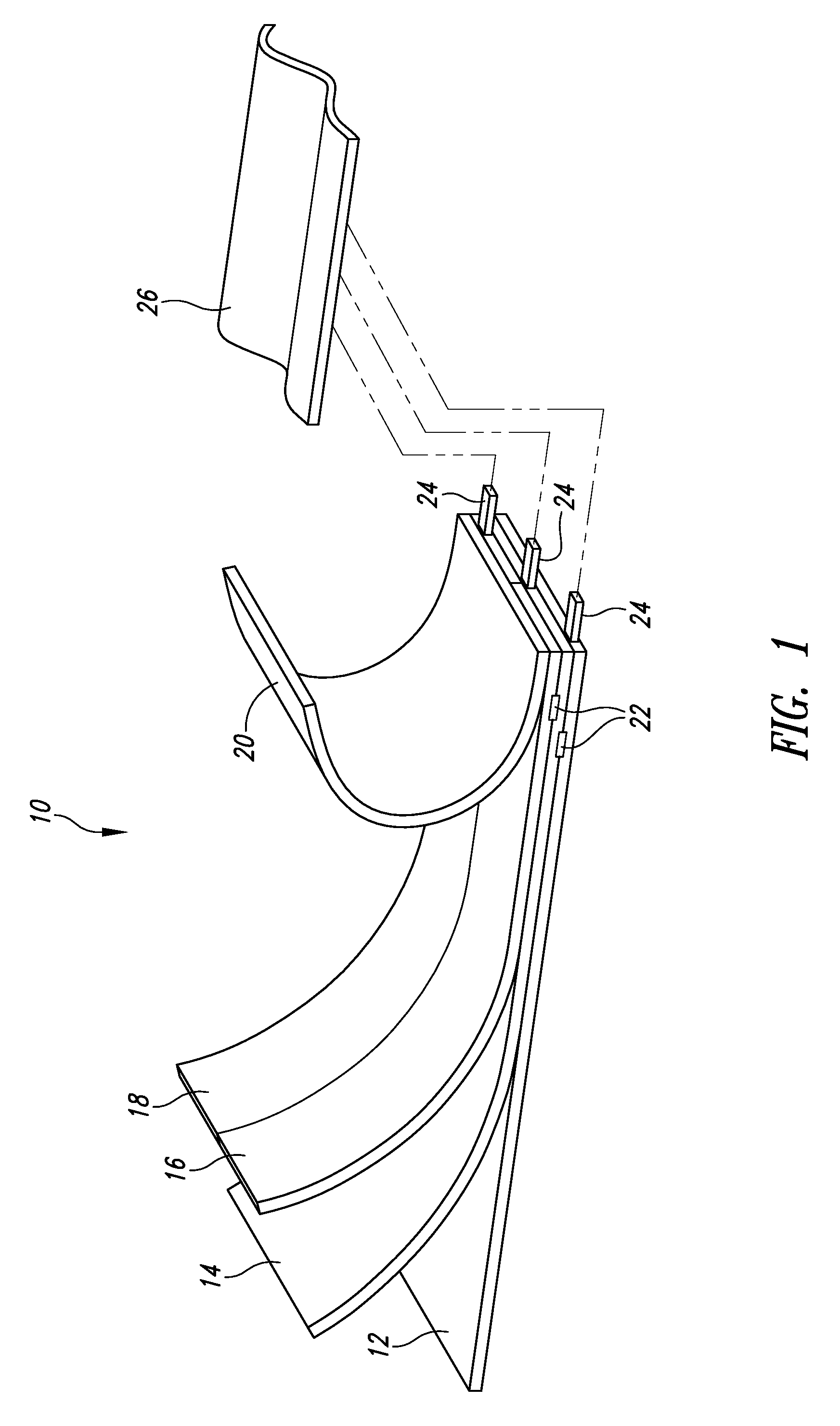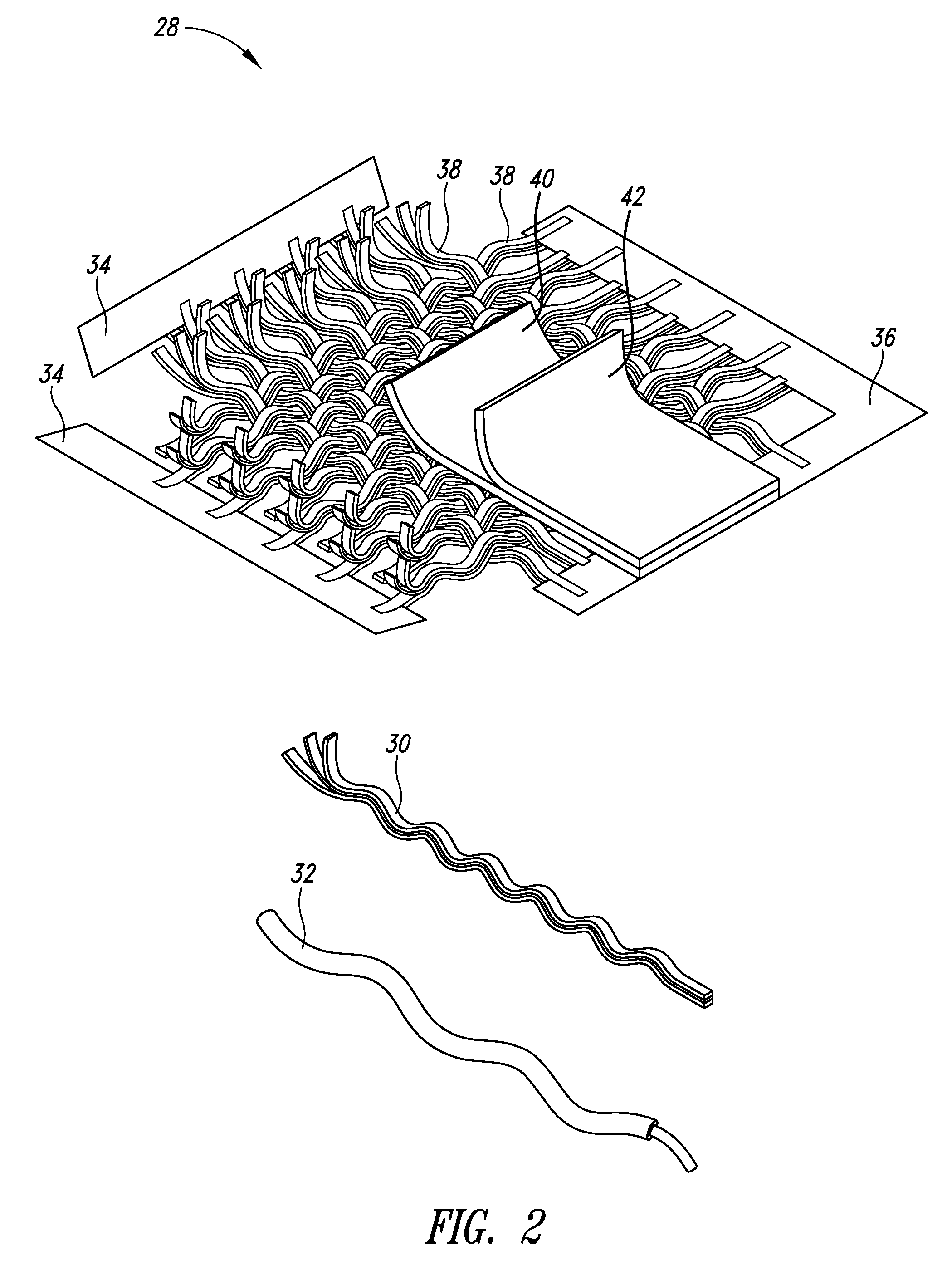Thin film energy fabric integration, control and method of making
a technology of energy fabric and thin film, applied in the field of thin film and flexible materials, can solve the problems of inability to store electricity, integrate into a completely flexible system, and no single fabric available to the engineer or designer that has the electrical energy storag
- Summary
- Abstract
- Description
- Claims
- Application Information
AI Technical Summary
Benefits of technology
Problems solved by technology
Method used
Image
Examples
Embodiment Construction
[0042] Referring initially to FIG. 1, shown therein is a flexible sheet 10 formed in accordance with one embodiment of the disclosure.
[0043]FIG. 1 serves to diagrammatically illustrate the flexible sheet form of the finished energy fabric 10 that includes an energy release section 12 and an energy storage section 14. An optional charge section 16 or recharge section 18 or combination thereof is shown along with an optional protective section 20 that can also be a decorative section. These sections can be manufactured separately and then laminated together or each section can be directly deposited on the one beneath it or a combination of both techniques can be employed to produce the final fabric. These sections can be arranged in any order including coplanar arrangements, layers, planes, and other stacking arrangements, and there can be multiple instances of each section in the final fabric.
[0044] The sections can also have different embodiments on the same plane. For instance, a...
PUM
| Property | Measurement | Unit |
|---|---|---|
| temperature | aaaaa | aaaaa |
| temperature | aaaaa | aaaaa |
| store energy | aaaaa | aaaaa |
Abstract
Description
Claims
Application Information
 Login to View More
Login to View More - R&D
- Intellectual Property
- Life Sciences
- Materials
- Tech Scout
- Unparalleled Data Quality
- Higher Quality Content
- 60% Fewer Hallucinations
Browse by: Latest US Patents, China's latest patents, Technical Efficacy Thesaurus, Application Domain, Technology Topic, Popular Technical Reports.
© 2025 PatSnap. All rights reserved.Legal|Privacy policy|Modern Slavery Act Transparency Statement|Sitemap|About US| Contact US: help@patsnap.com



